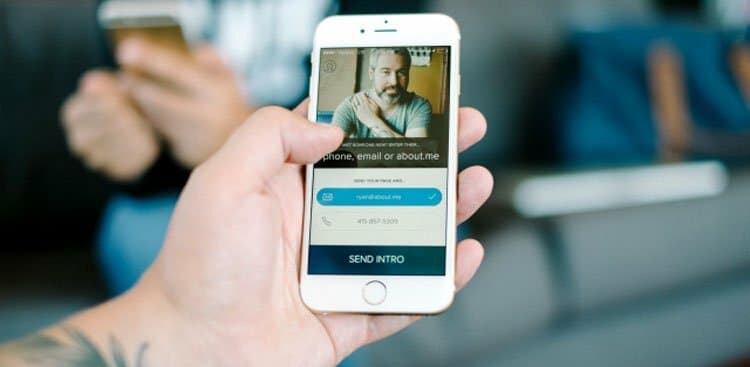More than 27 million business cards are produced every day, but 90% of recipients of said cards will toss them within a week.
Yikes.
While business cards are still the most convenient, efficient, and socially accepted way to introduce yourself to new professional contacts, they can be unwieldy (who wants to carry around even more crap?), limiting (it would be nice to share your resume or work samples along with your contact info), and outdated (even taxes and college applications aren’t completed on paper anymore).
So basically, business cards are one of the last pieces of traditional workplace technology that have yet to receive a digital age overhaul. Right?
Wrong.
Check out these six awesome new ways you’ve probably never heard of to bring your business card into the 21st century so you can not only kick ass, but take names, too.
1. swivelCard
These smart business cards are made of paper, but printed right onto them is a USB drive with 5.1 MB of storage. That means that, in addition to your name and contact info, you can hand people your resume, portfolio, presentations, videos—the options are endless.
Program each swivelCard individually if you want to share different content with different contacts, or load up an entire box of the cards with the same data. You can even re-program the cards remotely if you ever want to, say, update the copy of the resume they’re loaded with. And thanks to real-time analytics, you can track who’s accessed your cards’ data, from where, and how often. Pricing starts at $9.99 for 10 blank cards and goes up with the more cards or customization you want.
2. Clinck
This free app, available for iOS and Android, digitizes your business card and lets you send it virtually to new contacts, even if they don’t have the Clinck app. All you need is an email address. Clinck lets you include a photo or logo, a personal message, and of course your contact information—plus links to your website and LinkedIn profile (which, unlike on a hard-copy business card, will actually be clickable).
about.me’s “Intro” enables you to turn your about.me page into a shareable digital business card that you can send on your phone, through email, or via about.me. Share any combo of info from your about.me page, from your photo and bio to your phone number and email. Recipients can then save your details straight to their phone’s address book.
QR codes have waned in popularity, but including one on your business card is still a solid option if you want an easy way to get your resume and work in someone else’s hands. Online printing company MOO lets you quickly and simply design your own business cards using a myriad of seriously stunning templates. Then, input the information you want the QR code to link to—for example, your website, blog, or LinkedIn profile—and MOO will generate the QR code for you and place it on the business card template. With prices starting at $19.99 for 50 cards, this is a pretty affordable way to kick-start your digital networking.
MOO is also working on a cool new business card technology, NFC by MOO. Each NFC (Near Field Communication) business card includes a tiny embedded microchip that, when touched to an NFC-enabled smartphone, prompts the phone to download your portfolio, play music or a video, load web pages, save your contact information, or do anything else you’ve pre-programmed. And, you’ll be able to rewrite your NFC card as often as you’d like. If you’re interested in getting in on the action when the cards go to market, sign up for email updates here.
5. CamCard
Shanghai-based CamCard digitizes the entire business card process, from creation to exchange, with “e-cards” that you can trade with professional contacts and cloud-based storage that syncs across devices in real time. CamCard’s built-in scanner can read business cards in 16 languages, and you can even import CamCard business contacts to Outlook. The app is available on iOS, Android, Windows, and BlackBerry, and it’s all free.
VUE, Inc. not only wants to update the concept of the business card, it wants to do away with it altogether. This free, aptly named app, available on iOS and Android, lets you immediately connect with people on the spot. Whenever you make a new connection—say, at a conference, meetup, or workshop—just ask for the person’s email address and enter it along with the location of your meeting into the app. The app then populates an intro email to that person, which you can customize to include whatever personal info you want.
With any of these newfangled tech-driven alternatives to the old-fashioned business card, you’ll have an ace up your sleeve to impress any professional contact. Trust us; it’s in the cards.

